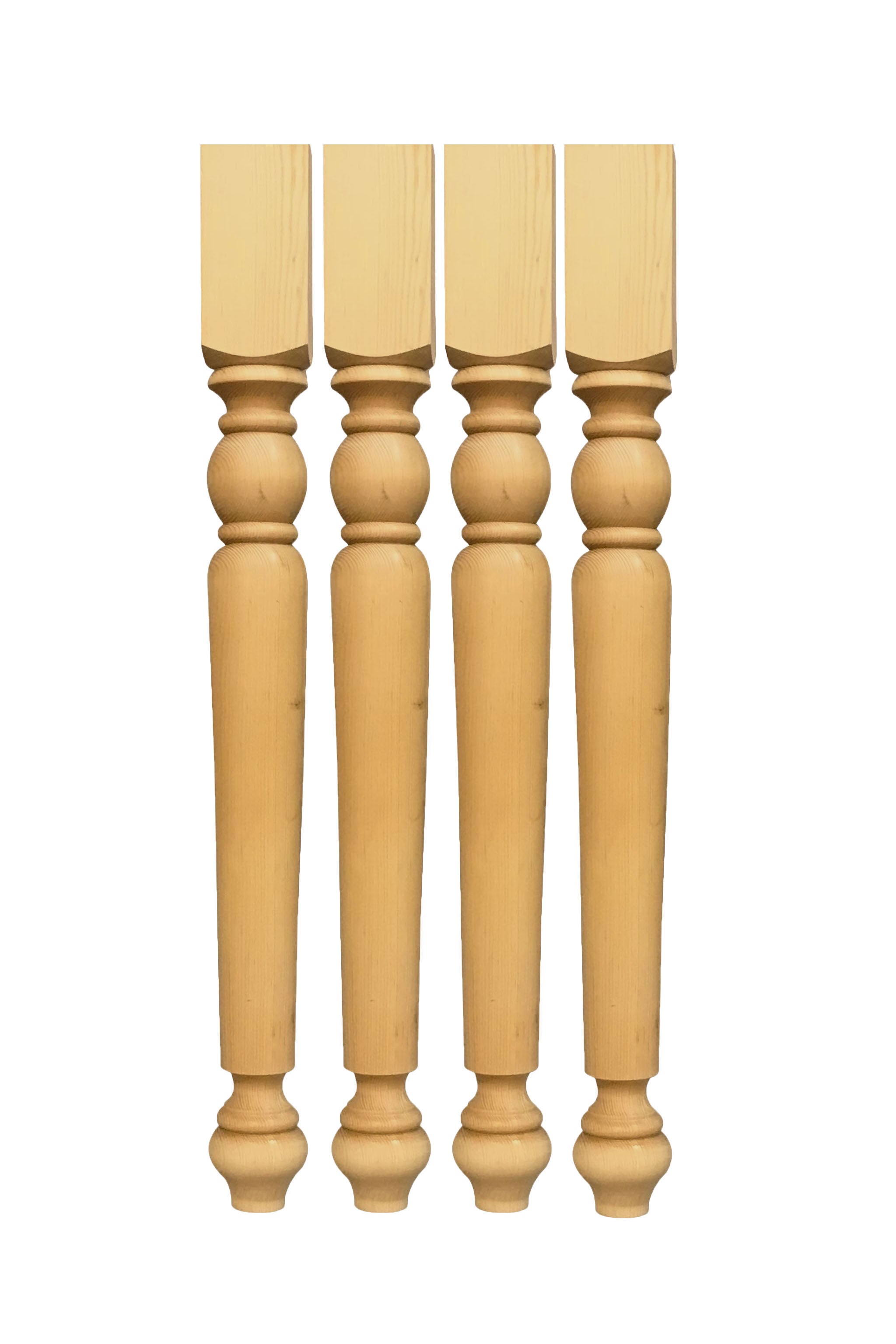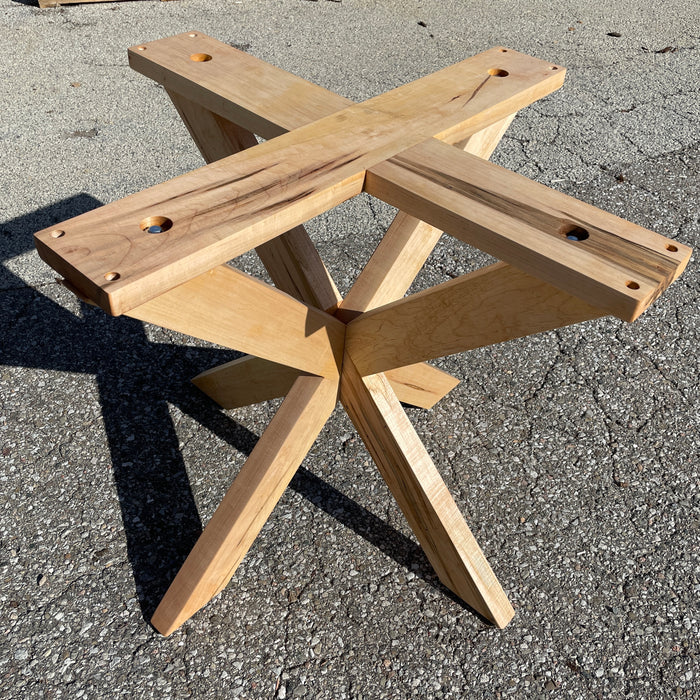Key Factors to Bear In Mind for Table Legs Timber Choices
When selecting timber for dining table legs, numerous critical variables call for careful consideration to guarantee both capability and aesthetic appeal. The selection of wood kind, characterized by its resilience and one-of-a-kind grain patterns, plays an essential role in the overall layout and durability of the item. In addition, one have to contemplate upkeep needs and the environmental implications of sourcing materials. As these components link, they substantially affect the final result of your dining table. Recognizing the nuances of each aspect can be intricate, leading to important decisions that merit additional expedition.
Wood Types and Characteristics
When picking wood for dining table legs, it is vital to comprehend the special characteristics of various timber kinds. Various timbers use unique advantages and drawbacks, influencing both the longevity and visual allure of the completed item.
Hardwoods, such as cherry, oak, and maple, are typically chosen for their toughness and resistance to put on. Oak, recognized for its remarkable longevity, additionally features a prominent grain that can include personality to the table. Maple uses a smooth surface and is less vulnerable to warping, making it a reliable selection for useful furniture. Cherry wood, with its abundant color that deepens gradually, supplies a glamorous look yet may call for even more maintenance to stop scratches.
On the various other hand, softwoods like want and fir are much more inexpensive and easier to collaborate with, yet they are less resilient than woods. Pine is light-weight and features a warm, rustic look, making it a favored selection for casual eating settings. It is more susceptible to damages and scratches.
Comprehending these qualities will certainly aid in making a notified decision to ensure the legs of the table meet both visual and useful demands.
Grain Patterns and Aesthetics
Choosing the best grain pattern can considerably boost the visual appeal of dining table legs. The wood's grain is not just an aesthetic attribute; it conveys an one-of-a-kind character and beauty per item. Various wood species exhibit distinctive grain patterns, varying from the straight lines of maple to the intricate swirls of oak and the striking number of walnut. These patterns can stimulate different designs, from rustic to modern, making it vital to choose a grain that lines up with the general design of the dining space.
In addition, the positioning and scale of the grain can affect the regarded dimension and beauty of the table. For example, larger, more noticable grains may offer a strong, remarkable result, while finer, subtler grains can develop a fine-tuned, understated appearance. Additionally, the ending up procedure can better enhance these patterns, highlighting the all-natural elegance of the wood and bringing out abundant tones.
Eventually, the choice of grain pattern ought to harmonize with various other layout components, such as the table top and bordering furnishings, ensuring a natural aesthetic that boosts the dining experience. Thoughtful option of wood grain not just contributes to the table's beauty yet also shows best site the proprietor's taste and style.
Sturdiness and Stamina
The durability and stamina of dining table legs are critical factors to consider for making sure durability and security in any kind of eating area. Choosing the appropriate timber is essential, as various types show differing levels of durability.

Inevitably, purchasing top quality timber and durable building and construction techniques will produce a table that stands the test of time, while providing a reputable structure for plenty of dishes shared among family and close friends. Focusing on resilience and toughness guarantees that your dining table stays practical and aesthetically pleasing for many years to find.
Upkeep and Care
Appropriate maintenance and treatment are vital for preserving the longevity and strength of table legs made from wood. Normal cleansing is important; utilizing a soft, damp cloth try this ensures that dirt and particles do not accumulate, which can lead to scrapes and monotony. It is advisable to avoid rough chemicals or rough materials that can harm the finish.
Furthermore, using a suitable timber polish or wax periodically can assist keep the sheen and protect the timber from dampness and spills. It is critical to adhere to the supplier's suggestions concerning the type of product to use, as certain surfaces might respond adversely to details chemicals.
Humidity and temperature fluctuations can also impact wooden table legs, causing them to check my reference warp or crack. It's ideal to position the table away from direct sunshine and heat sources. Dealing with these quickly can prevent additional damages. if the table legs have any type of scratches or damages.
Finally, regularly examining the joints and screws for tightness is very important to preserve structural integrity (Dining Table Legs Wood). By adhering to these maintenance methods, homeowners can guarantee their wooden table legs stay practical and appealing for several years to come
Ecological Factors To Consider
When picking timber for eating table legs, it's vital to take environmental considerations into account. The sourcing and sustainability of wood are critical in minimizing eco-friendly impact. Choosing wood from certified resources, such as those recommended by the Woodland Stewardship Council (FSC), ensures that the timber is collected responsibly, promoting woodland preservation and biodiversity.

In addition, regional sourcing of wood reduces transport emissions, sustaining local economies while minimizing ecological influence. It is also advisable to be knowledgeable about the timber's treatment and ending up procedures, as particular chemicals can be hazardous to both human health and the environment. By prioritizing sustainable timber selections, consumers can add to ecological preservation while enjoying the resilience and elegance of their table legs.
Verdict
In final thought, picking wood for eating table legs requires cautious consideration of numerous factors, including timber kinds, grain patterns, and resilience. Maintenance needs and environmental sustainability further impact wood selections, stressing the significance of sourcing from licensed or reclaimed materials.
When choosing wood for eating table legs, several critical elements necessitate careful consideration to make certain both capability and aesthetic allure.Correct maintenance and care are crucial for maintaining the durability and strength of eating table legs made from timber.When selecting wood for dining table legs, it's necessary to take environmental considerations into account. By prioritizing lasting timber choices, consumers can contribute to environmental preservation while appreciating the durability and charm of their dining table legs.
In conclusion, selecting wood for dining table legs demands careful consideration of various factors, consisting of wood types, grain patterns, and resilience. Dining Table Legs Wood.